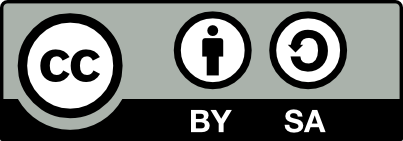NATO’s Warfighting Capstone Concept: How Able to Anticipate the Changing Character of War?
Choose format
RIS BIB ENDNOTEPublication date: 2024
Wschodnioznawstwo (Eastern Studies), 2024, Volume 18, pp. 177-192
https://doi.org/10.4467/20827695WSC.24.012.20627Authors
NATO’s Warfighting Capstone Concept: How Able to Anticipate the Changing Character of War?
While the fundamental nature of warfare does not change, new models and tactics will continuously be developed as it always involves a conflict of will and interests, violence, resistance, political manoeuvring or deception. The character of war will continue to evolve and become more common than ever as rival parties engage in activities outside the usual peace‑crisis‑conflict dynamic. Russia’s invasion of Ukraine, which started with the annexation of Crimea and support for the separatist movements in the two eastern regions of Donetsk and Luhansk, turned into a direct full‑scale military attack on the entire country as of 24 II 2022. Due to these developments, how the new operation concept, which the NATO alliance has begun to design for the coming years, will be affected, has gained importance. NATO’s military supremacy is under threat as Russia actively readapts its more aggressive military stances, as seen in the example of its invasion of Ukraine. Alliance Members are subject to constant attacks today, even under traditional warfare thresholds. Conflicts that spread to NATO Partner countries and even regions close to the alliance borders also risk a significant spread to Allied territory. The NATO alliance must be ready for this. This research presents critical takeaways from work guiding future capability development. It offers recommendations from a new perspective so that NATO can continue to defend and protect the interests and values of its members.
Azzarone, G. & Da Silva Bezerra, V., Ukraine ‘In Between’: The Road To War And Kyiv’s Reaction to the Russian and European Initiatives in the Post‑Soviet Space, „Eurasian Research Journal” 2023, vol. 5, no. 2.
Bicer, R.S., An Assesment on NATO’s Defence and Deterrence Studies, „The Journal of Security Strategies” 2022, vol. 18, no. 42.
Binnendijk, H. & Kugle, R.L., Dual‑Track Transformation for NATO (2003), [in:] Transforming NATO an NDU Anthology, eds. H. Binnendijk, G. Cordero, The Center for Technology and National Security Policy at the National Defense University, Washington 2008.
Coffey, L. & Kochis, D., NATO in the 21st Century: Preparing the Alliance for the Challenges of Today and Tomorrow, „The Heritage Foundation Special Report” 2020, no. 235.
Diaz de Leon, J., Understanding Multi‑Domain Operations in NATO, „NATO JWC The Three Swords Magazine” 2021, no. 37.
Ellison, D., Mastering the Fundamentals Developing the Alliance Future Battlefield: NATO Warfighting Capstone Concept, „NATO JWC The Three Swords Magazine” 2021, no. 37.
Galtung, J., Introduction. Peace by Peaceful Conflict Transformation – The TRANSEND Approach, [in:] Handbook of Peace and Conflict Studies, eds. C. Webel, J. Galtung, Abingdon 2007.
Hall, J. & Sandeman, H., NATO and the Future Character of Warfare, Strategic Update, September 2021.
Keil, S., NATO Burden Sharing in a New Geopolitical Era, [in:] NATO 2030 Towards a New Strategic Concept and Beyond, ed. J. Blessing, K. Kjellström Elgin,
N.M. Ewers-Peters, Foreign Policy Institute/Henry A. Kissinger Center for Global Affairs, Johns Hopkins University SAIS, Washington 2021.
Mearsheimer, J.J., The Tragedy of Great Power Politics, New York 2001.
NATO 2022 Strategic Concept, Bruselles 2022.
NATO Supreme Allied Command Transformation (ACT), Strategic Foresight Analysis: Regional perspectives report on Russia, 2022, https://www.act.nato.int/application/files/9816/1350/4281/regional-perspectives-2021-01.pdf.
NATO Warfighting Capstone Concept [18 V 2022], https://www.act.nato.int/our-work/nato-warfighting-capstone-concept/.
Spišák, J., Hybrid Threats: A Challenge For The New NATOs Capstone Concept, [in:] 17th International Conference On The Knowledge‑Based Organization, Sibiu, Romania, 2011, https://www.researchgate.net/publication/305993362_HYBRID_THREATS_A_CHALLENGE_FOR_THE_NEW_NATOS_CAPSTONE_CONCEPT.
Ti, R., How Does NATO Apply Instruments of Power as it Prepares for the Possibility of Conventional Warfare Against a Peer Adversary? Applying a ‘DIMEFIL’ analysis, „The Journal of Military History and Defense Studies” 2021, vol. 2, issue 1.
Zilincik, S., Vorm, M. & Wiltenburg, I., The NATO Warfighting Capstone Concept: Key Insights from the Global Expert Symposium Summer 2020, The Hague Centre for Strategic Studies, The Hague 2021, https://hcss.nl/wp-content/uploads/2021/01/NATO_Symposium_Final_Version_For_Publication.pdf.
Information: Wschodnioznawstwo (Eastern Studies), 2024, Volume 18, pp. 177-192
Article type: Original article
Titles:
Istanbul Nişantaşı University
Turkey
Published at: 2024
Article status: Open
Licence: CC BY-SA

Percentage share of authors:
Information about author:
Article corrections:
-Publication languages:
EnglishView count: 216
Number of downloads: 297